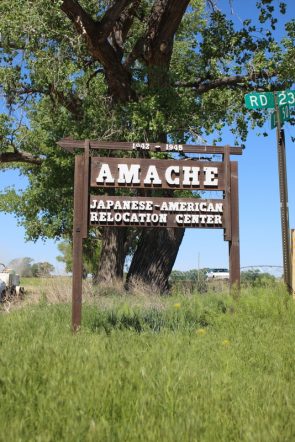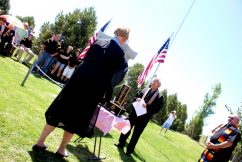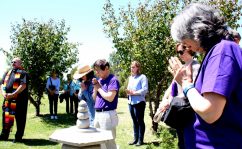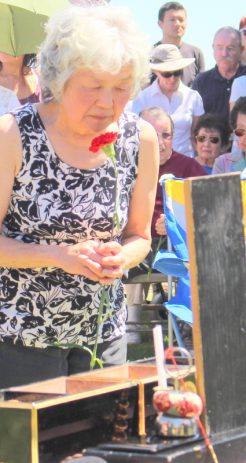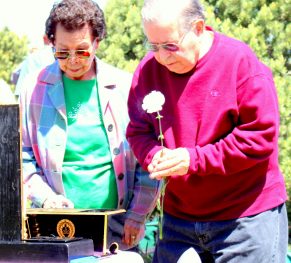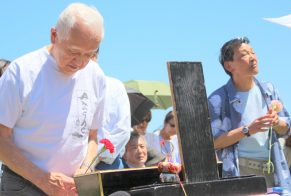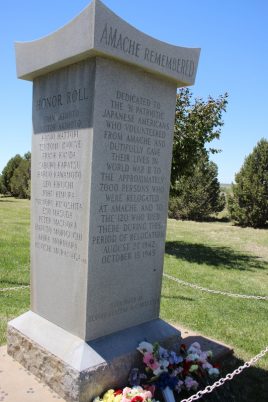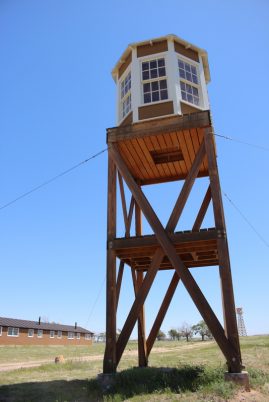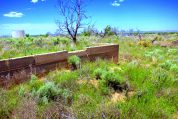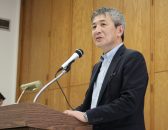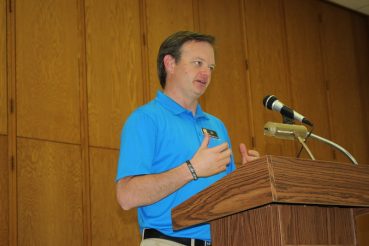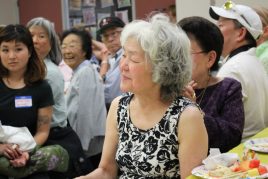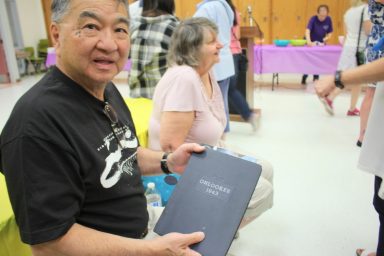GRANADA, CO-Marge Taniwaki, one of the original organizers of the first official pilgrimage to Granada Relocation Center-its official name-still organizes for the vigil 40 years later. In 1976 she along with colleagues Russ Endo and Mark Nakajima knew of the little recognition that the once dark secret in US and Colorado history received in school history classrooms and history books, so the annual pilgrimage to the actual site of the camp is held every year in order to change that. Taniwaki tours classrooms in the state to present on the topic just to make sure.
Taniwaki doesn’t politely refer to the World War II camps as “relocation centers.” She calls them concentration camps, “People were forced into train cars, had to leave everything behind but a suitcase, were forced to live in barracks with several other people in freezing and sweltering conditions, and were overseen by a military police armed guard 24 hours a day.” At the time, those interned knew nothing of their fate. After the war, those interned returned to their businesses that had been sold out from under them, and to no home. Most had to start over with no where to go and no one to support the effort. Taniwaki herself was interred at Manzanar camp in California as a small child.
Executive Order 9066 was signed by President Franklin D. Roosevelt in 1942 which ordered those of Japanese Ancestry including Japanese Americans especially in the west coast into camps against their will. Taniwaki says that the guise for the order was attributed to the threat to US security following the bombing of Pearl Harbor but Taniwaki calls the move a land grab. She refers to the move by the US government as a land grab at least in California partly because the water that farmers used in rural eastern California was siphoned off and funneled to the west. This left those formerly incarcerated from considering farming and prevented many a return to their roots.
This year’s commemoration celebrated other anniversaries in addition to marking the 70th anniversary of the closing of Amache and the 40th anniversary of the first official pilgrimage. This year marked the 10th anniversary of the year that Amache was designated a National Historic Site and organizers recognized the work of James Hada towards the effort. Hada’s mother was interned in Amache and as a child, the boy would travel to the camp to visit with her through the fence. In 2014 Hada was recognized and received the Japan Imperial Decoration, The Order of the Rising Sun, Gold, and Silver Rays. Hada passed away March 24, 2016.
The second appearance by Consul General of Japan to Denver Makoto Ito said he was first assigned to Canada. As an invited speaker this year he said that Amache’s legacy precedes his visit, “I had many opportunities to speak to Japanese Canadians and I heard many sad stories during their stay, during the World War time. I heard many proud stories as well. So when I came here to Denver, Colorado, I learned from our friends and colleagues in Japanese American communities the same stories, similar stories. Today it was [so impressive] to see how many Coloradans and Japanese Americans at this big [commemoration] and show of their friendship. It was really impressive. So now Japan and the US [are] keeping close relations and our lives because of the many many Japanese Americans, to create the foundation of the friendship between the two countries. Our consulate in Denver is waiting to cooperate in the future.”
Colorado district representatives Senator Larry Crowder and Representative Tim Dore appeared at this year’s commemoration. Senator Crowder made the connection between historical incarceration of entire groups with the suggestion of incarceration of those fleeing violence in Syria today, “It’s a very solemn occasion we have here today. There’s a lot of history behind this. You’re probably familiar with the Ralph Carr Judicial Building. You may not be familiar with right outside the Capitol, to the east is a marker for Ralph Carr. Ralph Carr was the governor in 1943 which put a stop to Camp Amache. And he was an inspiration to all of us. There were tough times in the country at that time. What happened should have never happened but it did. We were thankful to have enough great people in the government to put a stop to this. We should learn from what happened. We have similar instances with the Syrian people now. There’s talk of incarceration. We need to learn from Camp Amache what happened. But it’s something that did happen and we must learn from it.”
Representative Tim Dore:
“This is one of the events I look forward to every year because of the community that comes together from all over Colorado and the United States to remember what occurred here some 70 years ago. And this year I was lucky enough to be able to bring some of my children and maybe reflect on such the good work that the high school is doing here in keeping fresh the history that is so important for us to maintain, because if we don’t, we tend to repeat things as a humanity. And so [Granada] high school is going out and working on the camp, preserving it, really bringing it up to its historic moment is so important because they learn from that what is so important for us to learn as a society. And they will pass it on to the next generation. And as long as we keep doing that, I’m hopeful that we will never repeat the wrongs that we do as a humanity.”
This year one of the barracks from Block 12A (pictured below) was restored in its original position. This restoration follows the restoration of Amache’s water tower and guard tower, also restored in their original positions. Partner groups intend to restore additional structures as funding allows.
On Sunday, those who once lived at Amache were taken by John Hopper, Granada High School Principal to the original sites of their barracks. Hopper himself was celebrating his 25 year anniversary of beginning the project restoring the camp but also restoring the memory of what happened their years earlier.
At Amache in 1943, 174 students graduated from Camp Amache on June 25th. Marion Konishi was Valedictorian of the class and she appeared at this year’s Amache commemoration to give her original graduation speech, “What America Means to Me.” Konishi told the crowd that she felt overwhelmed by the honor and that she felt the same as she did in 1943, “I wondered if America still means and will mean freedom, equality, security, and justice when some of its citizens were segregated, discriminated against and treated so unfairly. I knew I was not the only American seeking an answer.”

